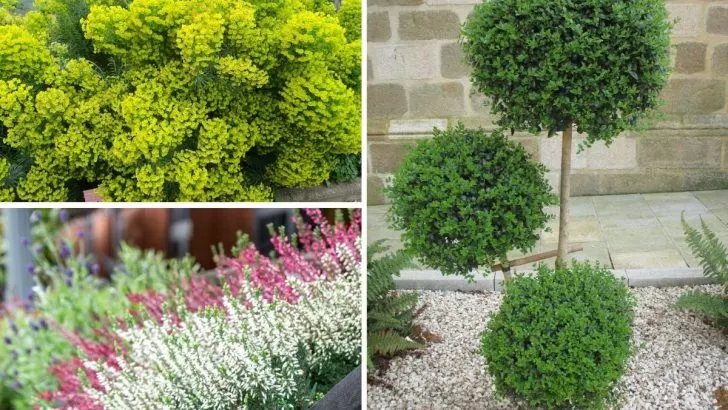When the core parts of your yard start to fade back in winter, it can leave things looking a bit sparse. But with the right selection of plants – especially those that bring structure and presence – your outdoor space can maintain an elevated, polished look even during the colder months.
Let’s be real: there’s no single trick to creating a high-end landscape design. There are countless. One of the best ways to keep your garden looking luxe all year round is through architectural plants.
These are plants that are naturally structured, defined, and almost sculptural in their growth. It’s these plants that can transform a simple garden into an elegant, sophisticated space, whether it’s in flower beds, small urban plots, or even winter containers.
1. Boxwood
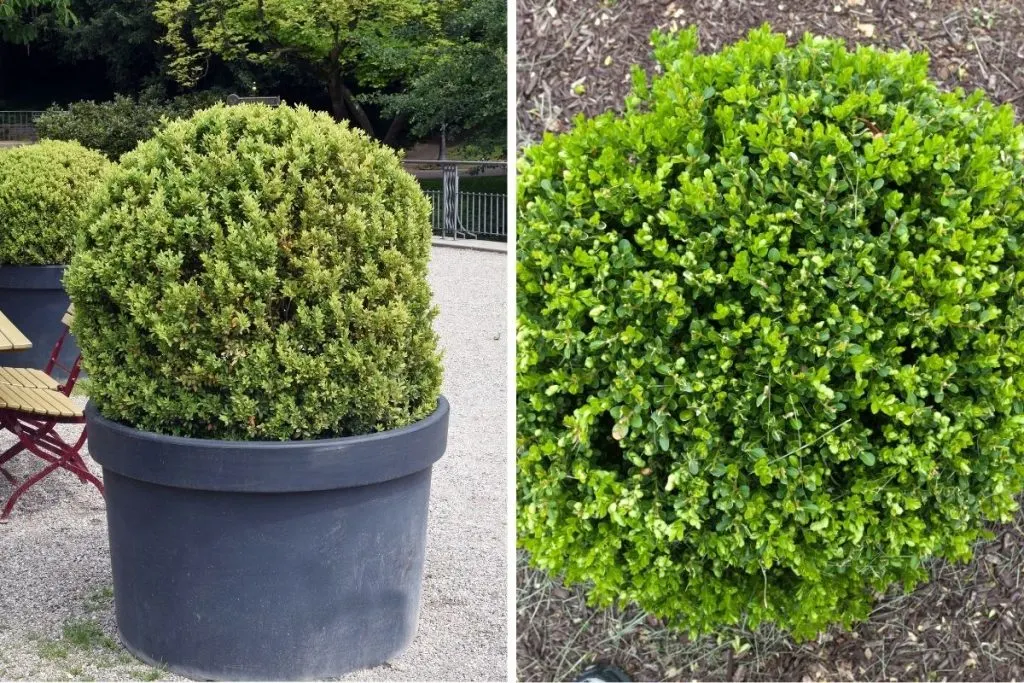
Boxwood is a classic evergreen shrub, beloved for its compact, tidy appearance. It’s a staple in gardens across the country and a key feature in many refined designs.
While it’s often used as a privacy hedge because of its dense growth, boxwood can also add evergreen interest and sculptural greenery to your yard during the winter.
Its small leaves make it perfect for sculpting, with sharp, clean lines that can create striking shapes in the garden, from spheres to whimsical forms. From five-foot spirals to lollipops and cones, the possibilities for boxwood topiary are endless.
But don’t stop at just planting boxwood. Pairing it with the right companion plants is just as important. The key is contrasting textures.
Sharply-sheared boxwood shines against the softer, more unpredictable forms of Miscanthus and other grasses that tassel in fall.
To maintain this contrast, keeping your boxwood neatly trimmed is essential. Topiary shears are ideal for smaller boxwoods. They allow you to make precise cuts more efficiently than traditional pruners.
2. Mahonia
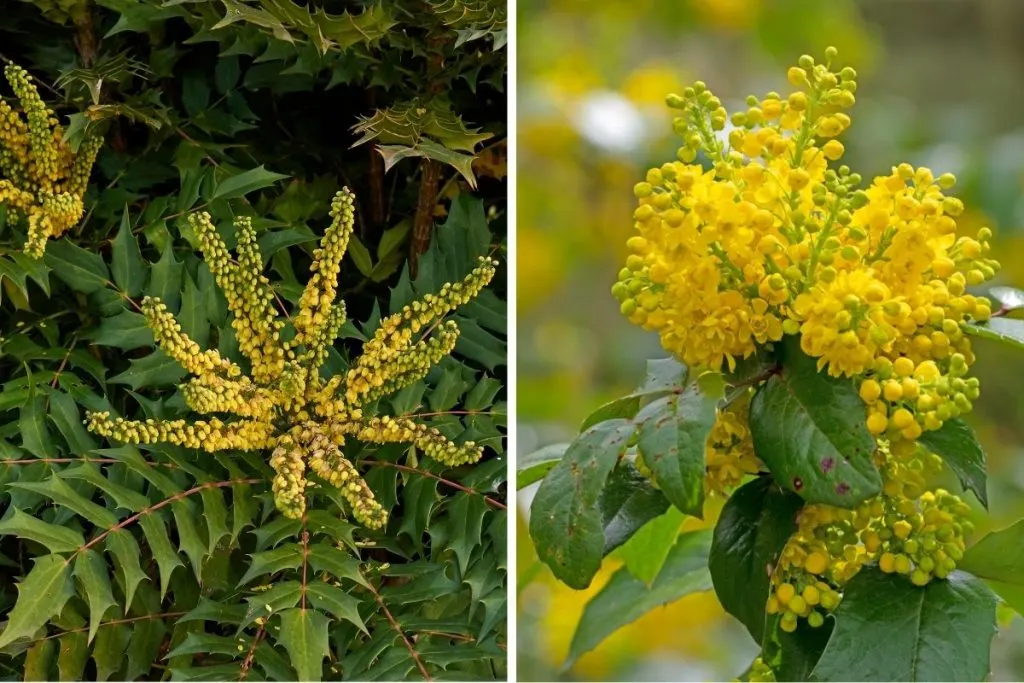
When it comes to structure, you can’t go wrong with Mahonia. Its holly-like leaves catch the eye, and its late summer and fall blooms bring bursts of color against the darker green foliage. Varieties like ‘Volcano’ are particularly striking.
With its saw-toothed evergreen leaves and bright yellow winter blooms, Mahonia adds a touch of the exotic to garden designs. Plus, it thrives in dappled light, shade, or full sun.
It’s also a low-maintenance choice. Once planted and watered (but not over-soaked), Mahonia can pretty much take care of itself. Just be mindful of which variety you choose; some are compact and great for ground cover or containers, while others can grow into large shrubs that might overwhelm smaller spaces.
3. Eryngium
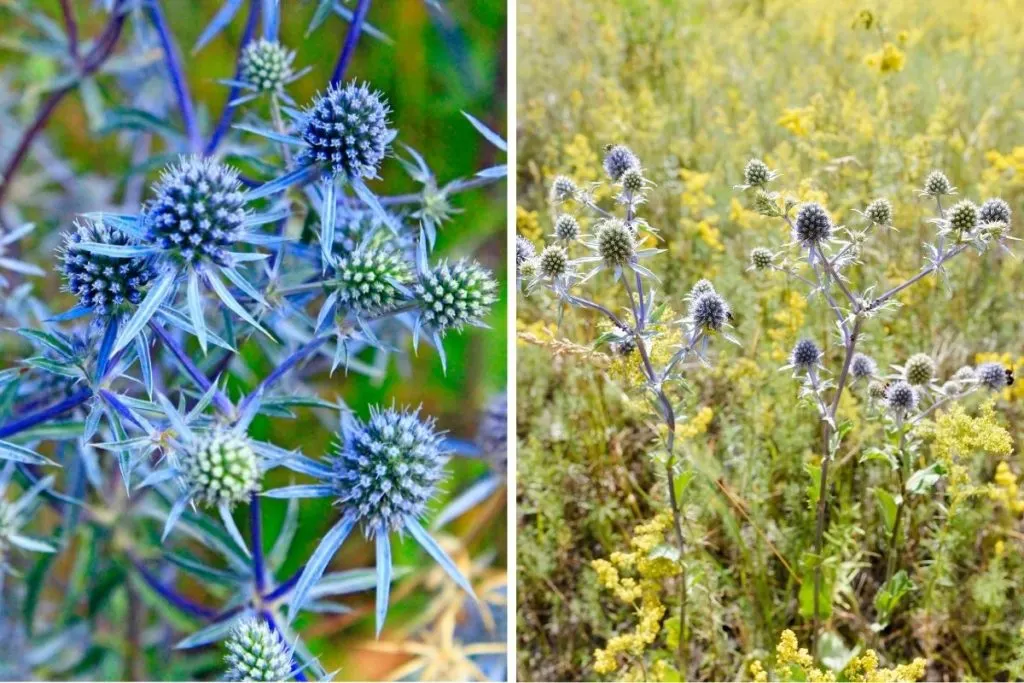
Eryngium, or sea holly, is a go-to for anyone looking for architectural flair. From its spiky flowers to its textured foliage, this plant keeps giving throughout the seasons.
Eryngium adds height and resilience to any garden, with tough seedheads that can withstand harsh winds and snow. Just make sure the soil stays dry – they don’t like ‘wet feet.’
These silver-leaved beauties should take center stage in your garden borders. Eryngium, teasel, and thistle add focal points among the softer hues of evergreen shrubs like Rhododendron and Hydrangea.
And if you’re into floral arrangements, Eryngium is a winner. Cut them at the base and use them fresh, or hang them upside down to dry for a long-lasting display.
4. Teasel
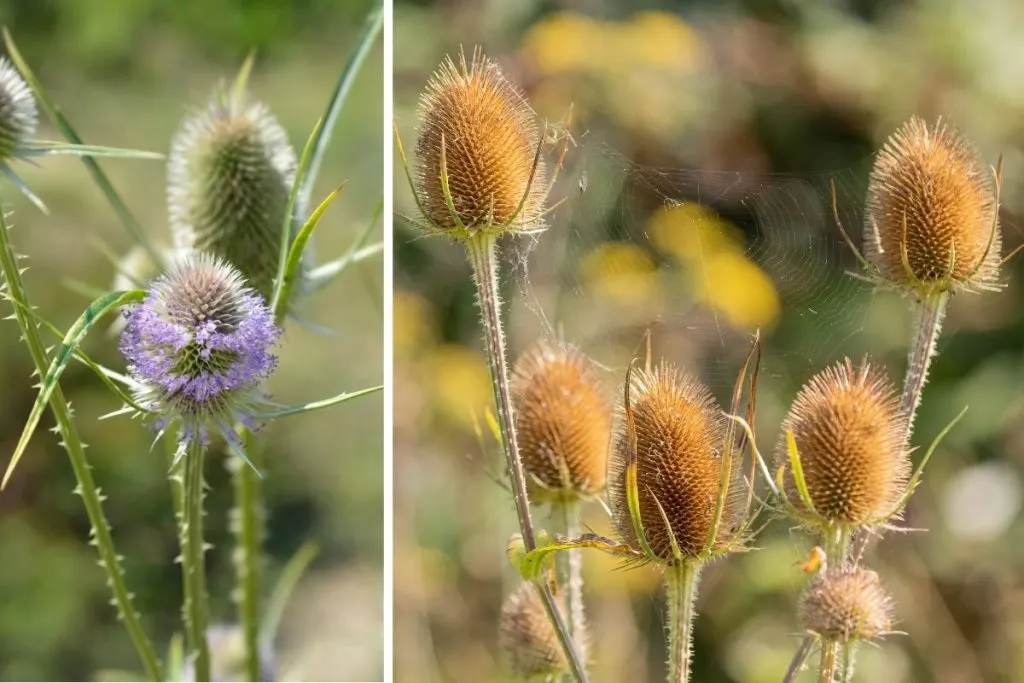
Teasel is a magnet for pollinators and birds – especially goldfinches who love the seeds. Its tall, statuesque form makes it a favorite for luxurious garden designs.
This plant’s name comes from its historical use in wool carding. It thrives in consistently wet soil, ideally at the end of a woodland. Teasel’s striking structure makes it truly architectural, and it can grow up to 6-7 feet high.
Teasel’s simple form contrasts nicely against more robust plants like hydrangeas. It’s also fantastic for naturalistic designs, pairing well with wildflowers like echinacea and ferns.
Plus, plants like Miscanthus, Echinacea, and Rudbeckia provide food for local birds. The added bonus? Birdsongs throughout winter.
5. Heather
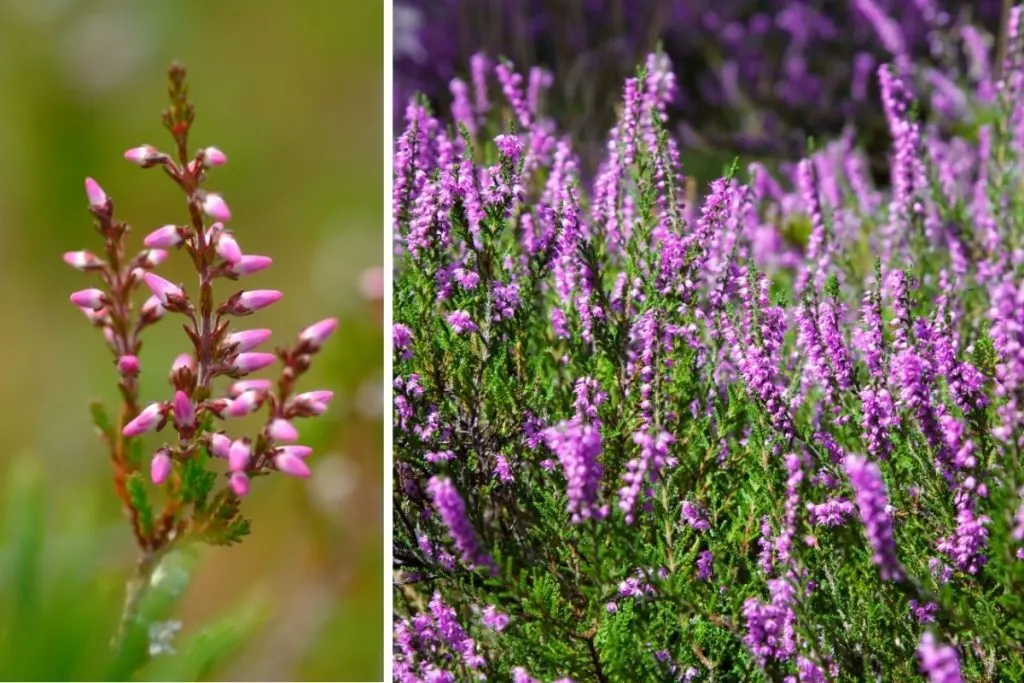
The focus on texture doesn’t stop with tall perennials. Ground-level interest is just as important, and alpine plants like heather shine in this role.
Heather is tough, resilient, and striking. It’s perfect for rocky garden spots or windswept areas, and it starts flowering in the fall, holding its color into early winter.
Heather’s compact size makes it ideal for shallow containers or window boxes. Its spire-like blooms stay under 11 inches, so they won’t block your view.
6. Sempervivium
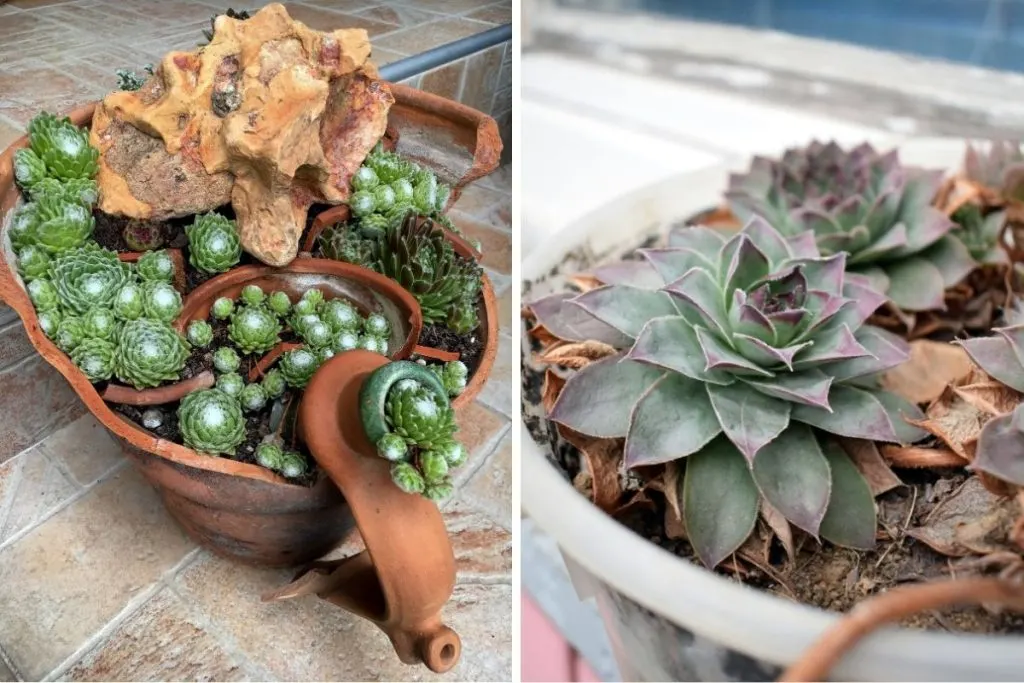
Sempervivium, often called “houseleek,” is like the Art Deco of plants. These little succulents can peek through paths and hide in crevices, adding charm without needing a perfectly manicured space.
They’re increasingly popular as green roofing materials due to their resilience. Sempervivium keeps paths and cobblestone gaps interesting even in winter. Just keep the soil dry and give them plenty of sun.
These plants thrive in gritty, well-draining soils. Nestle them along pathways or in-between bricks for added visual interest in your hardscaping.
7. Ascot Rainbow Euphorbia

Euphorbia is a standout evergreen. Its tall stems and lush, rounded leaves create a jungle-like vibe, making it a staple for architectural planting.
A standout variety is the Ascot Rainbow Euphorbia, a hybrid that catches the eye with its variegated, ombré pattern. In spring, you’ll see chartreuse blooms that double the plant’s height, giving it a skeletal, almost transparent appearance.
Pairing euphorbia with other plants requires a bit of foresight. It’s an art to balance the sturdy presence of evergreens like euphorbia with the wilder, softer forms of perennials like Iris, Heuchera, and Perovskia.

